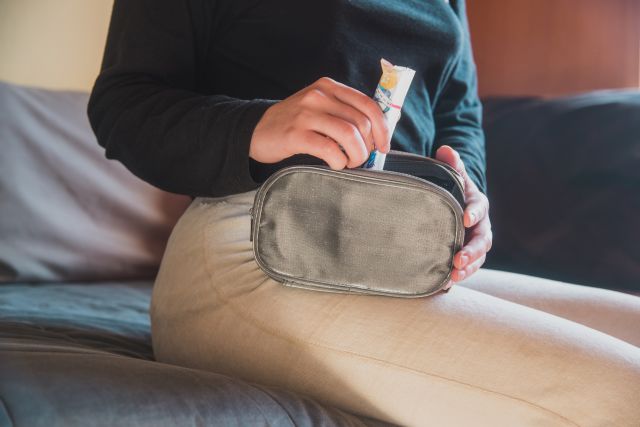Updated on August 18, 2023.
Back in the 1980s, the illness “toxic shock syndrome,” or TSS, made the headlines, and it had many people tossing out their boxes of tampons for fear they would get sick from using them. Some four decades later, we know more about what causes TSS and how to use tampons safely.
While there are still some cases of TSS, it’s become exceedingly rare. “Toxic shock syndrome happens to maybe two people out of 100,000, and only about half of those will be menstrual-related,” says Catherine Bagley, DO, an OBGYN with Henrico Doctors’ Hospital in Henrico, Virginia. The original small outbreak of TSS in 1980 was strongly connected to a brand of super-high absorbancy tampons that are no longer available.
What is toxic shock?
TSS is a bacterial infection that can potentially be life-threatening. It is primarily caused by Staphylococcus aureus—S. aureus or staph—a bacterium that lives on the skin or in the nose of many people, usually harmlessly. Most people develop antibodies against staph, but those who don’t mount an effective immune response can develop TSS through an infection. “Toxic shock is a staph infection that’s systemic,” meaning it affects the whole body through the bloodstream—not just the infection site, says Dr. Bagley. It is a condition than can affect people of all sexes and of all ages, not just those who are menstruating.
There are many things that can cause TSS, including surgical wounds, cuts or burns on your skin, as well as gynecological causes, including childbirth and a history of using super-absorbent tampons, diaphragms, or contraceptive sponges. Viral infections such as the flu or chickenpox can also sometimes cause TSS.
Infection with another type of bacterium—Streptococcus or strep, the cause of strep throat—can also lead to a condition that mimics TSS, but is much less common than staph-caused TSS, says Bagley.
What is the connection between tampons and TSS?
TSS used to be more common because tampons had higher levels of absorbency, according to Bagley. Highly absorbent tampons may increase the risk of TSS because “the higher absorbency, the more blood is just sitting inside the vagina, which increases the risk of bacteria growing,”she says. Tampons sold in the U.S. today can no longer use the type of materials or designs that were associated with TSS in the 1980s.
Symptoms of toxic shock include:
- Widespread rash with the skin beginning to peel after a week or two
- Confusion
- Diarrhea
- Headaches
- Fever
- Redness of eyes, mouth or throat
- Nausea and vomiting
- Muscle aches and pains
- Low blood pressure
As toxic shock progresses, it can cause seizures and organ failure, says Bagley.
TSS treatment
TSS is a medical emergency. Call 911 right away if you notice any of the symptoms listed above. Treatment usually consists of antibiotics and intravenous fluids. Dialysis might be necessary if kidneys become damaged, and a treatment called immunoglobulin—medicine with a high level of antibodies that’s made from human blood—is sometimes used, as well. Those with TSS can expect to stay in the intensive care unit for some time. Staph TSS has a mortality rate of 1.8 percent, but strep TSS—which is extremely rare but very dangerous— kills 30 to 70 percent of those who get it. If you’ve gotten TSS from a tampon, you shouldn’t continue using tampons.
Using tampons safely
Bagley says most OBGYNs recommend changing tampons every four to six hours, although some guidelines say four to eight hours. According to Bagley, doctors aren’t sure how long it takes for TSS to develop, but it may depend on the type of bacteria and how it gets into the bloodstream, such as through a scratch or abrasion. If you feel discomfort from your tampon from abrasions, consider switching to pads until you’re healed.







